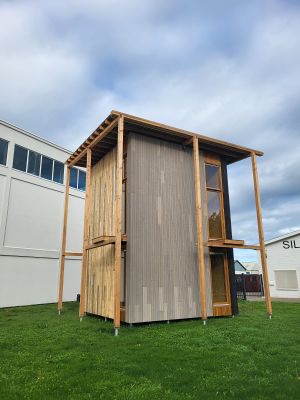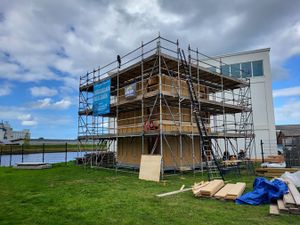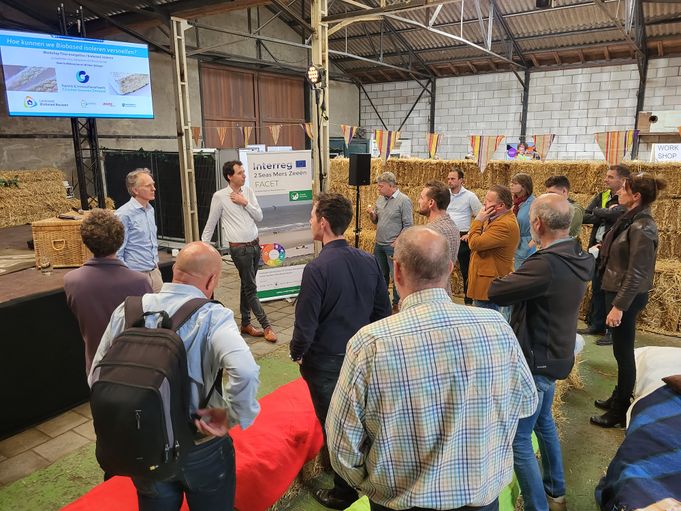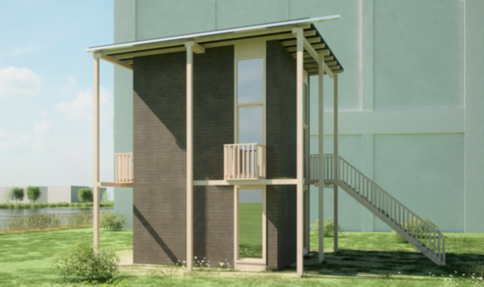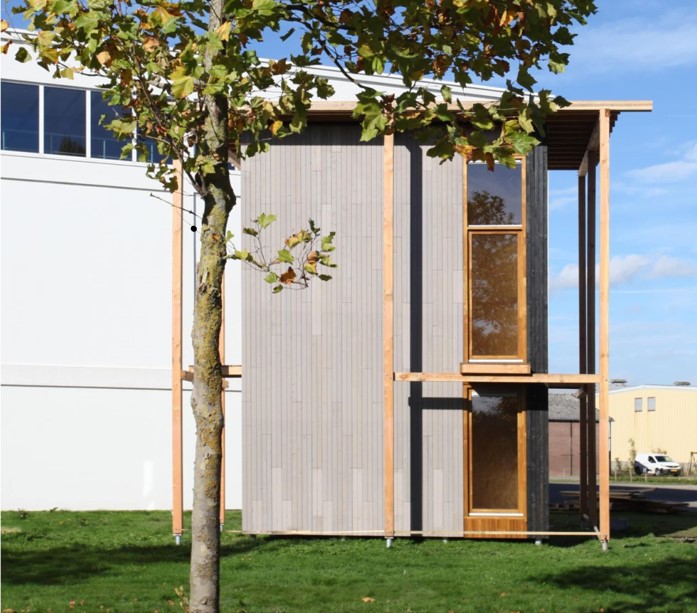Geen bewerkingssamenvatting |
Geen bewerkingssamenvatting |
||
| Regel 21: | Regel 21: | ||
Within this project, van de Velde is responsible for the installation of various elements. This company's experience with sustainable practices and their drive to innovate their working methods to generate an even more sustainable process made them an ideal partner to have involved in this project. {{Cite|resource=Bestand:Template van de Velde - ENG.pdf|name=Read more about the role of van de Velde (ENG)...|dialog=process-file-dialog}} | Within this project, van de Velde is responsible for the installation of various elements. This company's experience with sustainable practices and their drive to innovate their working methods to generate an even more sustainable process made them an ideal partner to have involved in this project. {{Cite|resource=Bestand:Template van de Velde - ENG.pdf|name=Read more about the role of van de Velde (ENG)...|dialog=process-file-dialog}} | ||
==== | |||
{{External link|resource=Resource Hyperlink 01183|name=Van Aken schroeffundering|dialog=process-linkwebsite-dialog}} | {{External link|resource=Resource Hyperlink 01183|name=Van Aken schroeffundering|dialog=process-linkwebsite-dialog}} ==== | ||
Van Aken offers a more sustainable alternative for the base of the building. This party works with a foundation that can be screwed in and also out of the ground. Perfect for reuse! {{Cite|resource=Bestand:Template info van aken - ENG.pdf|name=Read more about the role of van Aken in the FACET project...|dialog=process-file-dialog}} | Van Aken offers a more sustainable alternative for the base of the building. This party works with a foundation that can be screwed in and also out of the ground. Perfect for reuse! {{Cite|resource=Bestand:Template info van aken - ENG.pdf|name=Read more about the role of van Aken in the FACET project...|dialog=process-file-dialog}} | ||
Versie van 16 jan 2023 14:16
Pilot description
The aim of this pilot is to demonstrate the possibilities of building with circular and biobased materials in tourist accommodations. The final design consists of a two-storey building with an exhibition space and an apartment. Creating an accommodation that could demonstrate various aspects of circular tourist accommodation, that was our goal and we accomplished it!
We have worked together with tourist entrepreneurs and other stakeholders (f.e. architects, contractors) to Co-create the Circular design proposal. In this way we've demonstrated the possibility of a circular economy tourist accommodation which can also function as a test for tourist entrepreneurs who want to invest in circular economy accommodation but still have concerns; by involving them in the design they can test features and technics that they plan to apply, and receive feedback from users. Also in the project involved were students of the architecture program. They have started with the design which was then finished by an architect.
The focus was not only on the use of recycled materials, but also to have these processed in a way that the building parts/ blocks could be used afterwards. In addition, by focussing on bio based materials, such as agricultural waste, when the building blocks are at the end of their lifetime they could be processed into fertilizers. The building was also constructed in a way that it could be deconstructed and rebuild elsewhere. This allows for further piloting (noncommercial) with different users of the building after the project ending.
Besides the construction we demonstrated the more circular use of the building itself. Tourism is a highly seasonal sectors, with accommodation often being empty in low season. Therefore we have looked into the use of the accommodation as a meeting room and expo function as well as for student accommodation after high season.
In the elaboration, materials are sometimes chosen for the sake of feasibility. Not all of these materials are fully in line with the “biobased” theme, for example due to chemical additives. These materials will be mapped and alternatives will also be named. We may actually apply these alternatives at a later stage.
Partners and their story
Several parties participated in the realization of this pilot project. Contacts were sought with parties that are actively working to make the world in which they operate more sustainable. Behind each party is therefore a story. Why do they participate in the project and what, for example, are the lessons they have learned? Read it in the stories below.
Rothuizen Architecten en Adviseurs B.V and Thys + Gutberlet architectuur
The accommodation is on the site of Rothuizen Architects and Advisors based in Middelburg. This party is actively involved in the construction and the pilot is also an eye-catcher on the so-called silo site on the Kleverkerkseweg where it is located. It is one of the reasons why architects Taco Tuinhof of Rothuizen and Derk Thijs of Thijs + Gutberlet are closely involved in the development and construction of the Biobased Beleven house. It must become the eyecatcher of the site. Read their whole story here (ENG)...
VKP
VKP knows one thing for sure: everyone should have the opportunity to live or work in a sustainable and high-quality building. Building the finest projects together with partners brings them closer to realizing our mission. This project therefore fits the company perfectly. Read more about VKP's role and the materials they used for the construction here (ENG)...
Van de Velde installatiegroep
Within this project, van de Velde is responsible for the installation of various elements. This company's experience with sustainable practices and their drive to innovate their working methods to generate an even more sustainable process made them an ideal partner to have involved in this project. Read more about the role of van de Velde (ENG)...
==
Van Aken schroeffundering ==== Van Aken offers a more sustainable alternative for the base of the building. This party works with a foundation that can be screwed in and also out of the ground. Perfect for reuse! Read more about the role of van Aken in the FACET project...
Timeline and pictures
November 2022 - Official opening
On Thursday 17 November, the HZ University of Applied Sciences is organizing a festive opening of the building where interested parties get a demonstration of the building.
Alderman Rutger Schonis of the Municipality of Middelburg and Barbara Oomen, president of the Executive Board of HZ University of Applied Sciences, opened the Biobased Beleven building on the Siloterrein in Middelburg on Thursday.
The two-story eye-catcher of the area on the Kleverkerkseweg, where Rothuizen Architects and Adviseurs, among others, can be found, is fully circularly built and consists largely of biobased materials.
Architecture students from the HZ produced the design. It was elaborated by architects Taco Tuinhof and Derk Thijs. Lecturers Willem Böttger and Phoebus Panigyrakis and project leader Maarten Den Hollander of the HZ lectureship Biobased Building also played a major role in the construction.
On the first floor of the building is an exhibition of all kinds of biobased building materials. On the second floor will be a studio. It was built within the framework of Interreg 2 Seas program FACET. With the Biobased Experience building, the HZ, both architects and all project partners want to show the possibilities of the circular economy in tourist accommodations. Besides the Biobased Building lectorate, HZ Knowledge Center for Coastal Tourism and HZ Knowledge Center for Entrepreneurship & Innovation are participating.
September 2022 - ZLND2050
September 2022 - Start of construction
On Monday September 12, the construction of a bio-circular accommodation started at the Kleverskerkseweg 49, Middelburg (Zeeland, the Netherlands).
Picture november 2022
Construction started at the location on Kleverkerseweg in Middelburg
Participation in the event ZLND2050
Pictures of the design:
Voorjaar 2021: studenten opleiding bouwkunde hebben een ontwerp voor een living lab uitgewerkt.
On our news page you will find a nice interview with lecturer-researcher Maarten den Hollander and students who are working on this pilot within FACET: click here for the article.
Zomer 2021: offertes aangevraagd om het budget dekkend te krijgen.
1e semester 21-22: studenten werken het ontwerp verder uit en maken stukken gereed voor de aanvraag van de omgevingsvergunning.
Januari-april 2022: opdrachten aan experts worden uitgeschreven.

